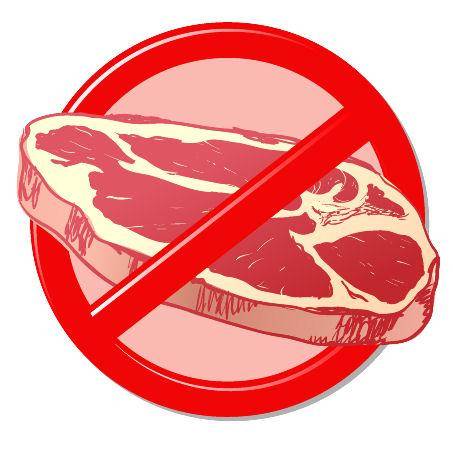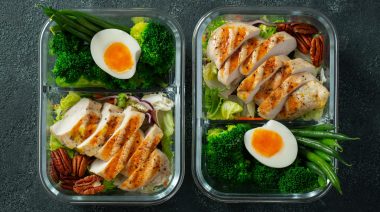If you have read any of my articles, you know I have a love for genetics. Something many of you may find interesting is that right now is the golden age of genetics. From about 1990 to present, biologists, geneticists, and other scientists have been making huge gains in the field, and they are continuing to do so. Genetic study is also starting to branch out into fitness and nutrition. The area of nutrigenetics is fairly new and this article will give you a general idea of how the study of genetics and nutrition has come together, and how that affects the everyday person.
What is Genetics?
Genetics is a huge field of study (you can get a degree in it and several specializations). In short, genetics is the study of inheritance in all of its manifestations. This study can range from the molecular level, such as the DNA sequence and the organization of chromosomes; to the generation of a phenotype, which is derived from the various genetic interactions and environmental conditions; to the changes of allele (alternative form of a gene) frequency in a population.
The Genetic Framework for Nutrition Decisions
Everyone is genetically different, including what we can digest and what we can’t. People with a particular genetic variant can differ in their response to nutritional challenges. An example of this is milk drinking. Many adults can drink milk without suffering discomfort, but other healthy and outwardly similar adults have difficulty with milk, having side effects such as abdominal cramps, bloating, or even diarrhea. The main reason for this is the presences or absence of the lactose-digesting enzyme lactase in the small intestine. People without the digesting enzyme have hypolactasia, and they have abdominal problems because the undigested lactose becomes fodder for the intestinal bacteria, which releases gas (and other unpleasant things).
Another example of genetic differences in nutritional requirements involves folate. It takes more folate to prevent neural tube defects for some pregnant women than for others because their metabolisms are tuned differently. Ten to thirty percent of women fall into a category that requires more than the current general recommendations for folate. In fact, when looking at a single food or nutrition, it is not unusual to have ten or more percent of healthy people with needs that are not met by current general recommendations because of their individual genetic makeup. It is rare for a person to not have at least one nonstandard nutrition requirement. And while the impact of each genetic variation might be small, given that most of us have many of these variants, when you add them together, they become important in determining your personal nutritional intake.
Genetics and Protein Intake
 This particular domain of nutrigenetics is rather large. Many of us are on the paleo diet, but there are some who either can’t eat protein or have a bit of an aversion to it. Well, there may be a genetic link. Aversion to protein-rich foods due to low ornithine transcarbamolyase (an enzyme) activity is a possible explanation. For people who have this disorder, ammonia builds in the blood when protein is broken down. This can be toxic if levels become too high and the nervous system will bear the brunt of the high ammonia levels. This disorder is normally caught at birth.
This particular domain of nutrigenetics is rather large. Many of us are on the paleo diet, but there are some who either can’t eat protein or have a bit of an aversion to it. Well, there may be a genetic link. Aversion to protein-rich foods due to low ornithine transcarbamolyase (an enzyme) activity is a possible explanation. For people who have this disorder, ammonia builds in the blood when protein is broken down. This can be toxic if levels become too high and the nervous system will bear the brunt of the high ammonia levels. This disorder is normally caught at birth.
There is something called “meat eater’s taste buds.” Taste is subjective, and yes, related to genetics. So those who have a high urge to eat meat may have the genetic taste receptor sequence variants of TAS1R1 or TAS1R3. Others who do not have the variant in the sequence may prefer not to eat meat and may be quite sensitive to the taste of meat, especially those in the TAS1R1 372T variant compared to those with the 372A allele (an alternative form of a gene).
Genetics and Cholesterol
Another example of how genetics affects our nutrition is sterol (cholesterol) absorption. More than a third of the cholesterol we consume from an egg is absorbed, packaged into chylomicrons, and transferred into the bloodstream. Chylomicrons are fat globules composed of protein and lipids. They transport fat from its port of entry in the intestine to the liver and adipose (fat) tissue.
Several proteins work together to facilitate cholesterol uptake from the intestinal lumen into the mucosal enterocyte (absorptive cells in the lining of the intestinal mucosa). One of these important sterol transporters is called Niemann-Pick C1 protein. This microsomal triglyceride transfer protein assists with packaging of the sterol into chylomicrons and its absence causes abetalipoproteinemia, which is an inherited disorder that affects the absorption of dietary fats, cholesterol, and fat-soluble vitamins.
An ATP driven transporter returns the cholesterol back into the intestinal lumen. There is also an inherited condition, phytosterolemia, where that transporter does not work. The most obvious physical sign of this condition is that it deposits cholesterol and plant sterols in the skin and soft tissue (xanthomas). The deposits usually occur in the knees, elbows, and Achilles tendons.
Genetics and Carbohydrates
 Many who follow the paleo diet may know that prehistoric people relied heavily on carbohydrates, and the carbohydrates they relied on were fruits, leaves, and roots. The carbs in these foods consists of glucose in a wide range of combinations and arrangements. Sugars like glucose, fructose, and galactose are absorbed through transporters in the small intestine (pictured in red). Carbs that are not absorbed end up becoming food for microorganisms in the ileum and colon. The kind and number of these microorganisms are different for each human host, depending on genetics, exposure at birth, environment, lifestyle, and most recent meals.
Many who follow the paleo diet may know that prehistoric people relied heavily on carbohydrates, and the carbohydrates they relied on were fruits, leaves, and roots. The carbs in these foods consists of glucose in a wide range of combinations and arrangements. Sugars like glucose, fructose, and galactose are absorbed through transporters in the small intestine (pictured in red). Carbs that are not absorbed end up becoming food for microorganisms in the ileum and colon. The kind and number of these microorganisms are different for each human host, depending on genetics, exposure at birth, environment, lifestyle, and most recent meals.
Many people have genetic variants that prevent them from absorbing one or more of the common sugars in foods and beverages. Many more people have variants that encode enzymes with slightly lower or higher activity. An example of a genetic factor that keeps someone from absorbing as specific sugar is galactosemia. It is a rare genetic disorder caused by a defective galactose-1-phosephate-uridyltransferase. Symptoms in newborns appear within days of milk feedings, including vomiting, diarrhea, and failure to thrive. Unless the child stops consumption of galactose the child will rapidly develop cataracts, enlargement of the liver, and kidney damage.
These examples are just scratching the surface of how genetics can impact how we think of nutrition. The important takeaway is that each of us should approach how we eat differently. While it’s important to eat healthy – be it paleo, the Zone, or whatever you choose – it’s most important to eat healthy for you. I had a genetic panel done on my own nutrition when I was diagnosed with celiac disease and it changed the way I ate drastically. I had made changes to accommodate my celiac, but I learned of additional things I needed to take out of my diet by learning about my genetic markers. Ultimately, it’s best to eat what will make you, as a unique human being, feel the best and be your best.
References:
1. Hyde, D., “Introduction to Genetic Principles.” (New York: McGraw Hill Companies, 2009), 2-5
2. Kohlmeier, M., “Nutrigenetics: Applying the Science of Personal Nutrition.” (Boston: Elsevier), kindle edition, Chapter 1, 2, 4
3. Tate, P., “Seely’s Principles of Anatomy and Physiology.” (New York: McGraw Hill Companies), 834-842
Photos courtesy of Shutterstock.






